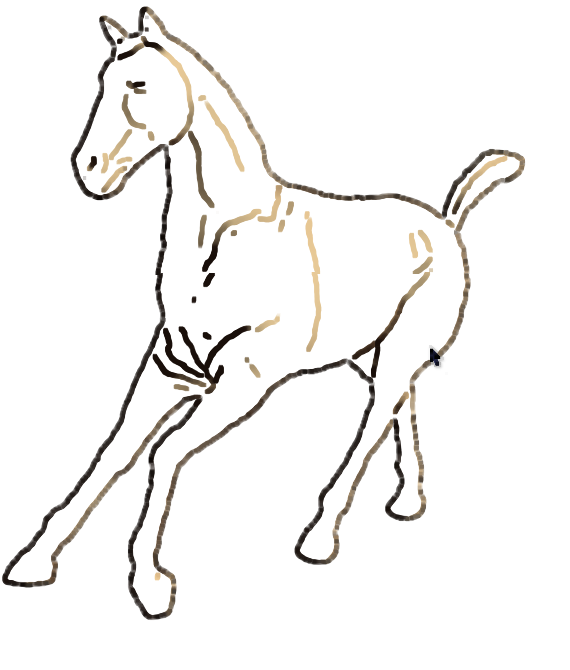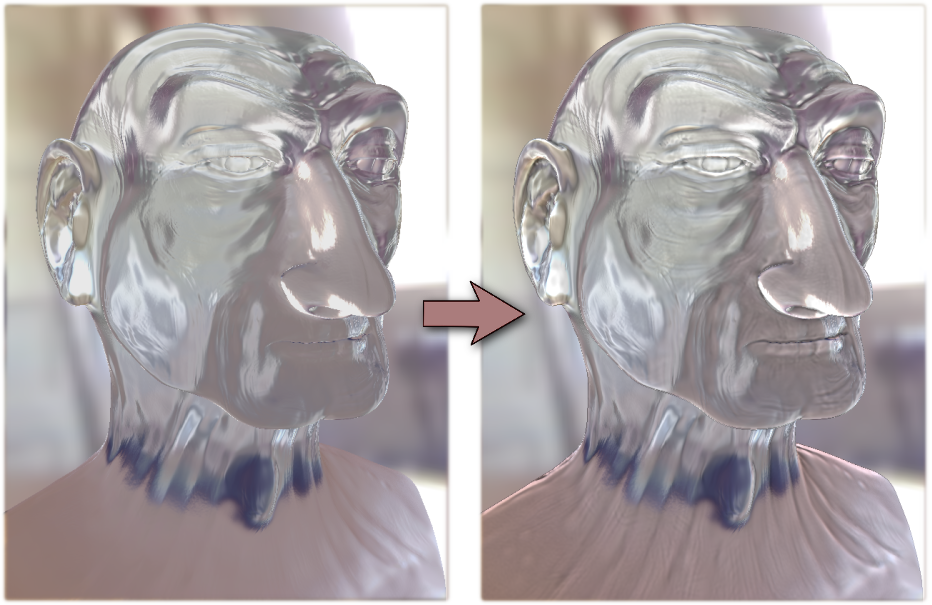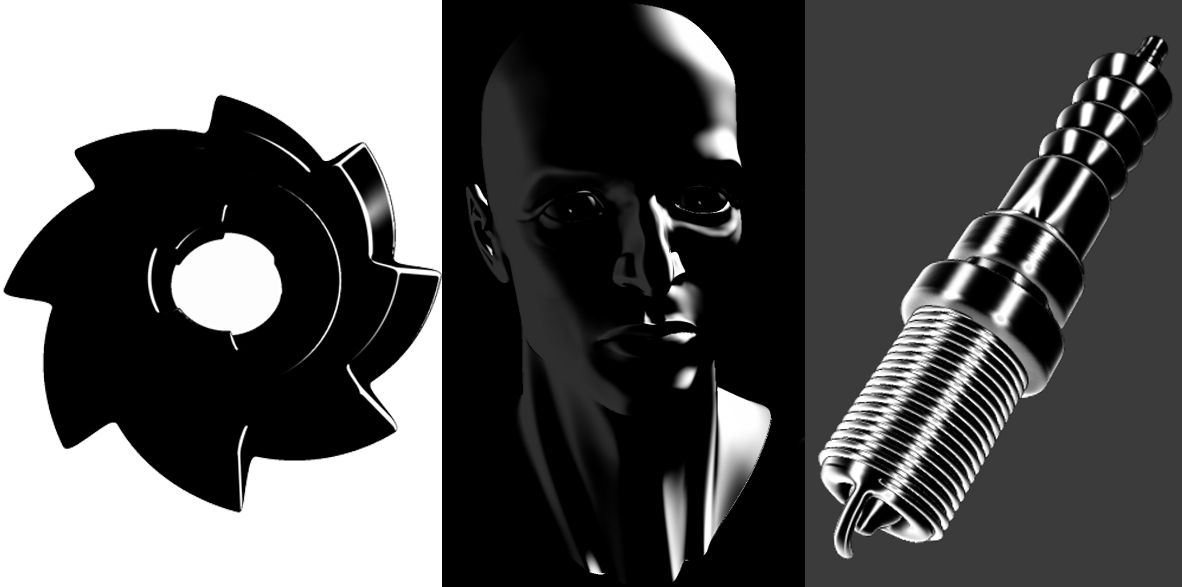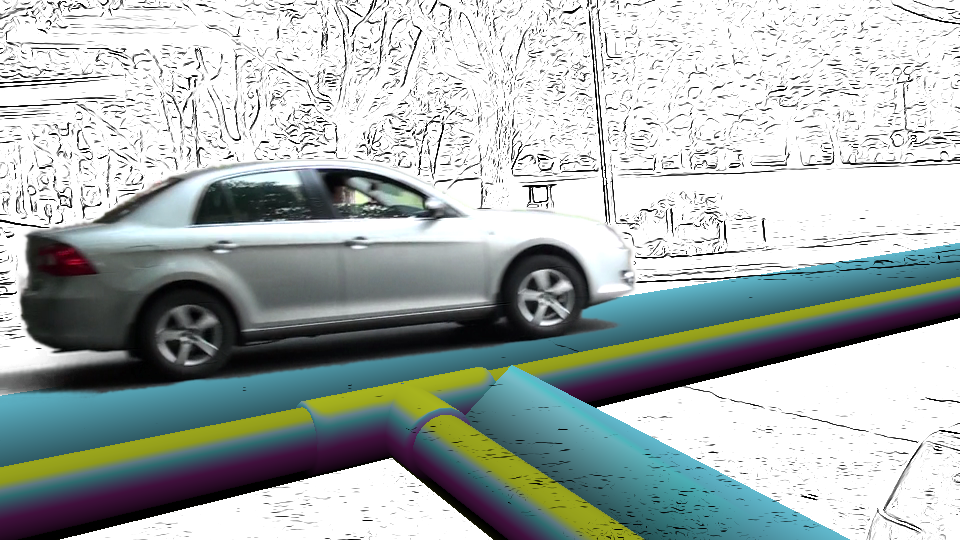Section: New Results
Expressive Rendering
|
Line-based Rendering
Participants : Pascal Barla, Jiazhou Chen, Xavier Granier, Christophe Schlick.
We have introduced [18] a new technique called Implicit Brushes to render animated 3D scenes with stylized lines in real-time with temporal coherence. An Implicit Brush is defined at a given pixel by the convolution of a brush footprint along a feature skeleton; the skeleton itself is obtained by locating surface features in the pixel neighborhood. Features are identified via image-space fitting techniques that not only extract their location, but also their profile, which permits to distinguish between sharp and smooth features. Profile parameters are then mapped to stylistic parameters such as brush orientation, size or opacity to give rise to a wide range of line-based styles. This work has won the 3rd best paper award at Eurographics annual conference.
Shape Depiction through Shading
Participants : Pascal Barla, Xavier Granier, Christophe Schlick.
Recently, a number of techniques have been proposed to exaggerate the depiction of shape through the shading of 3D objects. However, existing methods are limited to a single type of material, simple light sources, and they give a fake percept where 3D shape seems to be flattened or embossed, or produce temporal artifacts. We have recently shown that adjusting lighting amplitude for each direction (Radiance Scaling [38] , selected as a best paper at I3D 2010 and extended as a TVCG journal paper [17] ) may enhance the shape depiction. The technique has been ported to Meshlab (http://meshlab.sourceforge.net/ ).
Dynamic Expressive Shading Primitives
Participant : Pascal Barla.
Shading appearance in illustrations, comics and graphic novels is designed to convey illumination, material and surface shape characteristics at once. Moreover, shading may vary depending on different configurations of surface distance, lighting, character expressions, timing of the action, to articulate storytelling or draw attention to a part of an object. We have developed [31] a method that imitates such expressive stylized shading techniques in dynamic 3D scenes, and which offers a simple and flexible means for artists to design and tweak the shading appearance and its dynamic behavior. The key contribution of our approach is to seamlessly vary appearance by using a combination of shading primitives that take into account lighting direction, material characteristics and surface features.
Non-Uniform Compositing of Styles
Participants : Jiazhou Chen, Xavier Granier.
In order to investigate how the composition of different styles may help in directing user attention, we have developed [22] a non-uniform composition that integrates multiple rendering styles in a picture driven by an importance map. This map, either issued from salience estimation or designed by a user, is introduced both in the creation of the multiple styles and in the final composition. Our approach accommodates a variety of stylization techniques, such as color desaturation, line drawing, blurring, edge-preserving smoothing and enhancement.






